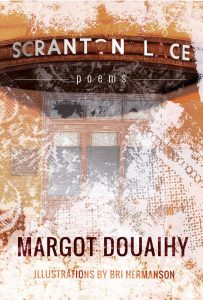
Steve Almond, the author of nine books of fiction and nonfiction, and a slew of DIY books with varied subjects, served as the final judge of Philadelphia Stories’ 2011 Marguerite McGlinn national fiction contest and was keynote speaker for that year’s Push to Publish conference. The prolific Almond describes himself many different ways: ‘troublemaker’ and ‘American freak’ on his website; ‘heartbroken lefty’ and ‘failed novelist’ in lectures and conversations. His self-branding suggests a writer determined to chart his own path – and a look at his ever-growing oeuvre confirms the suspicion. Those familiar only with Almond’s prize-winning short story collections, God Bless America and The Evil B.B. Chow, might not realize the breadth of his work, which ranges from the exquisitely literary to the overtly political and profane. His publishers have included big profit-makers and small indies, among them Random House, Algonquin, Grove Press, Mariner Books, Melville House, Lookout Books and now, for Bad Stories, Red Hen Press, a stellar not-for-profit indie based in Pasadena.
In the early years of his career, he originated an advice column called Dear Sugar for Stephen Elliott’s The Rumpus. He handed it off a few years later to his friend Cheryl Strayed. This was before the monumental success of her memoir Wild. Almond and Strayed, ‘great pals,’ have since created the ‘radically empathic’ podcast Dear Sugars and, based upon it, The Sweet Spot column in the New York Times. Connecting this work to his other writing, Almond says, “When we tell bad stories, we get bad outcomes, whether in our personal or political life.”
Almond, one of three sons of two psychiatrists, grew up in northern California but moved east for college (Wesleyan) and has stayed east ever since. These days he lives just outside Boston with his wife, the writer Erin Almond, and their three young children. He insists he has never had a master plan for his career. “I’m just trying to tell the truth about the stuff that matters to me the most deeply,” he said. “Most days I think of myself as a failed novelist. But it’s probably more accurate, and merciful, to say that I’m a short story writer who avoids writing novels by chasing his obsessions.
He recently answered a few questions for Philadelphia Stories:
PS: What compelled you to write Bad Stories instead of a million other things you could write have written about after Against Football?
SA: I come from a family that has always been politically active. My grandparents were members of the Communist Party. My parents were activists in the civil rights and peace movements. I was raised to believe that we have a moral duty to fight for social justice. Literature does that work, by enlarging our moral imaginations. But the 2016 election revealed a darkness in this country that terrified and confused me, and it was one that I had to try to understand before I could move on. In that sense, I really didn’t choose to write Bad Stories. The book chose me.
PS: What have you learned during your cross-country tour in support of the book?
SA: Mostly that citizens of good faith are much less interested in how we got into this mess and much more fixated on the question, “Who’s going to save us?” My response is to say, as gently as I can, “Hey, stop expecting other people to save us. The point of the book is that we’re going to have to save us.” I wrote the book so people would understand the forces that led to the 2016 election, and thereby feel less confused and distressed. But we’re living in an historical moment where the news cycle is so full of corruption and cruelty that people are in this state of perpetual distress and exhaustion. What’s really happening is a struggle of faith. People need to recognize that the fate of American democracy depends on them becoming active as citizens, giving time and money and passion to candidates and causes devoted to social and electoral justice. That requires people to shoulder the burden of hope, to believe they can make a difference.
PS: What has given you hope since the book’s publication?
SA: The idea that some Americans have responded by refusing to lose faith, and by converting their anguish into action. I’m thinking of the teachers in Arizona and West Virginia and Oklahoma who organized and demanded a livable wage. And the teenagers in Parkland who stood up and demanded that politicians be held accountable for supporting the gun lobby. And the huge numbers of citizens who have become more politically active, whether by running for office or simply getting off their couches and taking action.
PS: Which of the bad stories has continued to play out most vividly since the book’s publication?
SA: The bad story that the Cold War Is Over and We Won, I guess. It’s become obvious that Putin controls our president, inasmuch as our president can be controlled. Putin saw that America was vulnerable to bad stories. He saw that our democracy was fundamentally much weaker than we ever realized. Our media was so driven by profit that they could be enlisted to act as his press agents in smearing Clinton, that right wing media would also spread his propaganda, and that Americans were so apathetic that barely half of them would bother to vote. This is putting aside the revelations of attempted collusion and criminal conduct. Putin could see that Americans had grown lazy and disinterested, that millions had been indoctrinated by propaganda, that they would vote for a demagogue out of blind tribal loyalty and/or misogyny and/or racial resentment and/or gullibility. He saw the American empire as far more vulnerable than we did. He was right. That should trouble us more than the collusion itself.
PS: What can concerned readers of your book do to make things better? What should they read or listen to?
SA: I’d recommend changing your media diet, both for your mental health and so that you’re not supporting those programs that convert news into entertainment. Support organizations such as ProPublica and the New Yorker that do in-depth reporting on what the current administration is doing to place corporate interests above human interests. Stop watching the shows that feature pundits yelling at each other and focus on the voices that help connect the dots between corrupt business and corrupt government. And more than anything, take some kind of action rather than simply complaining to like-minded folk. For me, this has meant doing house readings and fundraising workshops. There’s no shortage, in terms of what we can do. And we should, because our kids and grandkids will want to know what we did.
Julia MacDonnell (Chang) has lived many lives, among them, urban homesteader, circus performer, modern dancer, waitress, anti-war activist, newspaper reporter, college professor, and ‘gluer’ of velvet boxes on a production line in a rosary bead factory. MacDonnell’s second novel, Mimi Malloy, At Last!, was published by Picador in 2014, and chosen as an Indie Next selection by the A.B.A. It was released in paperback in 2015. Her first novel, A Year of Favor, was published by William Morrow & Co. Her stories and essays have appeared in Ruminate, Alaska Quarterly Review, North Dakota Quarterly and many other publications. She is the former nonfiction editor of Philadelphia Stories.

